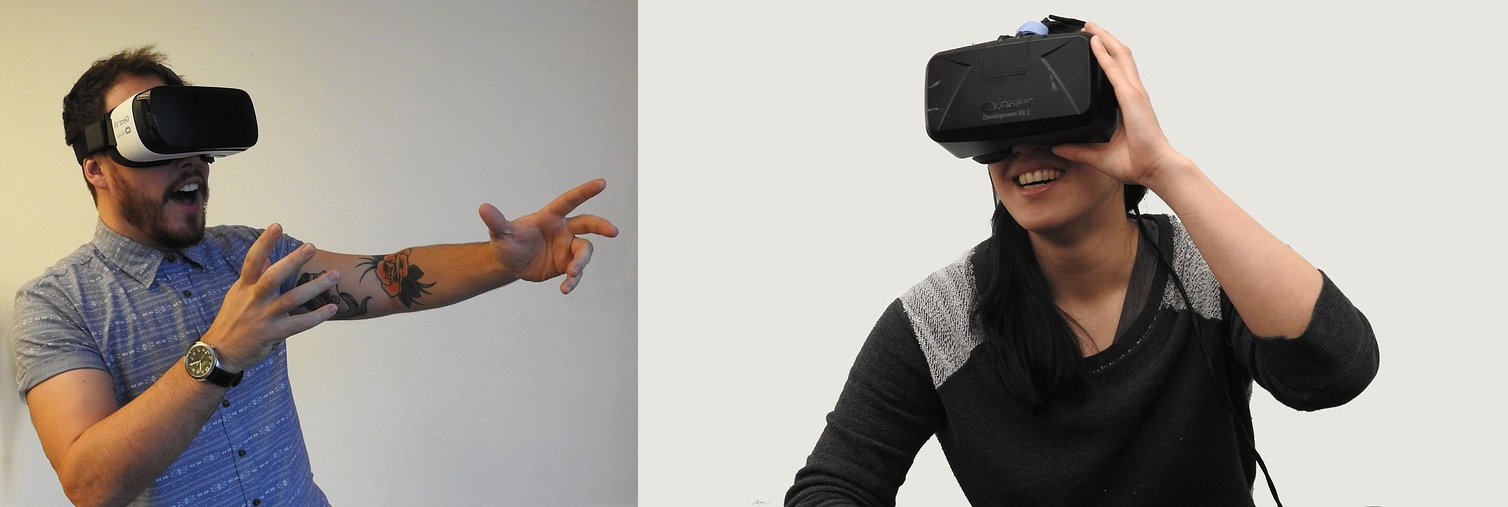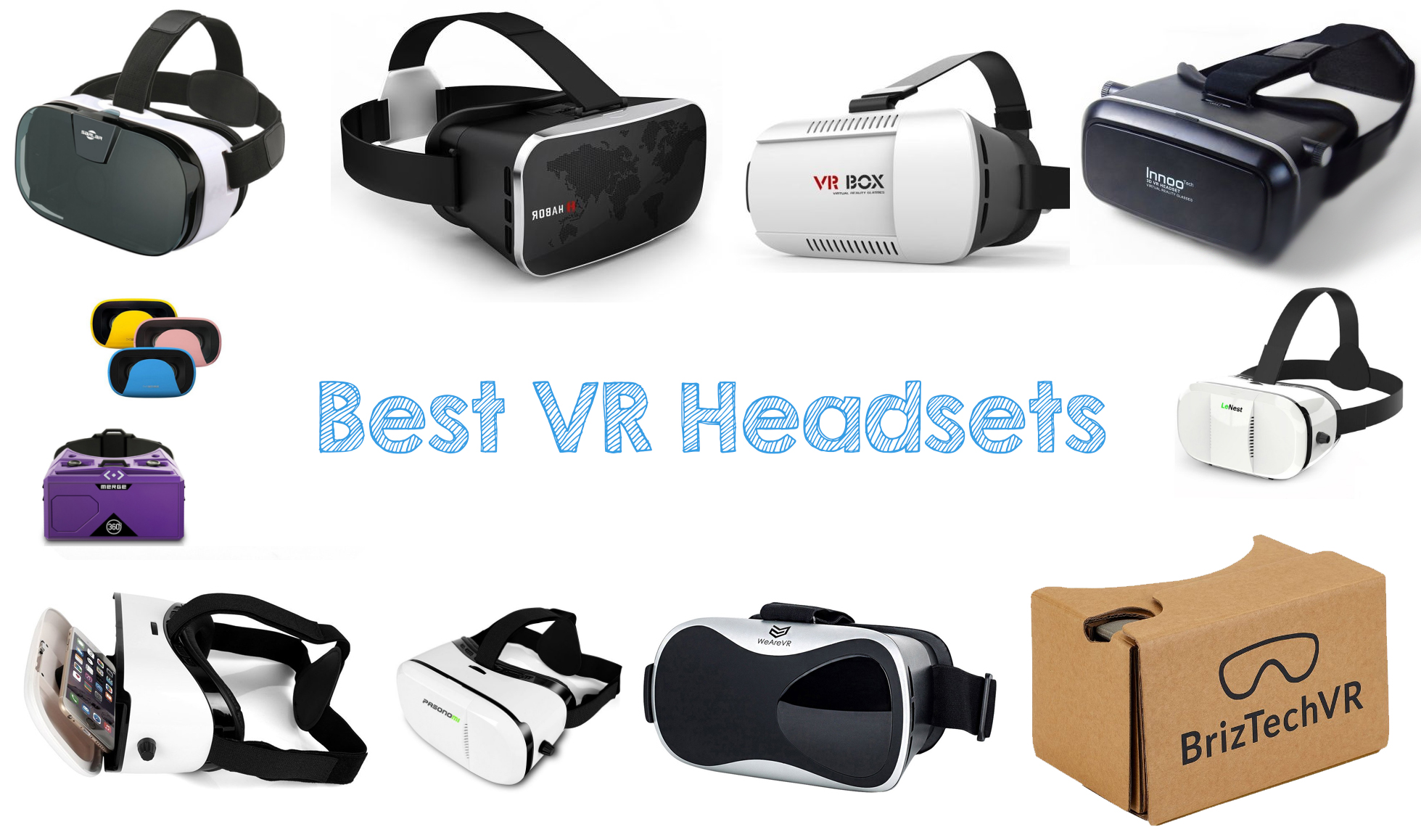With a number of options available for those who are looking for virtual reality (VR) headsets, things become a little difficult while zeroing down on a particular headset to purchase. Moreover, with different companies advertising different features, and slightly misguiding terminology, a detailed guide is required to help you choose the right headset your money can buy.

Firstly, a VR headset is not the same as a 3D headset. A VR headset simulates your presence in the environment, while a 3D device creates just a simulated environment. It is safe to assume that VR headsets are a step above 3D technology, for they simulate your own presence in the game you are playing or the movie you are watching.
A VR headset uses sensors such as gyroscopes and accelerometers to change the position of the images depending on your head’s movement, helping you to create an illusion that you are present in the 3D environment for real. Some of the more expensive VR headsets also track your body movements, making you feel as if you are walking inside the simulated environment. However, these devices tend to be pricier.
In this VR headset guide, let us take a look at the questions you should ask yourself while purchasing a VR headset. This will help you buy something that you would love using, without feeling like you spent more than what you probably could.
 After reading this article on the best way to pick your VR headset, don’t forget to go over our Best VR headset 2016 list to pick the one which is the most suitable for you.
After reading this article on the best way to pick your VR headset, don’t forget to go over our Best VR headset 2016 list to pick the one which is the most suitable for you.
-
Is it Wireless?
It should be known that there are two kinds of VR headsets available in the market: PC headsets and mobile headsets. PC headsets connect to your computer and cannot be used on their own. These tend to be expensive, especially when they come loaded with features. Oculus Rift, Samsung Gear and HTC Vive are some of the best examples. Smartphone headsets on the other hand are usually mobile, and can be used on their own. They make use of smartphones and the ability to use mobile apps to bring you great content. Google Cardboard is very cheap, though there are many expensive mobile headsets too. Plastic VR headsets tend to be more expensive, but are mobile too. Samsung Gear VR – the Innovator Edition is an example. Unless you are looking for something expensive, to get a decent VR experience, you can choose a mobile VR headset and experience virtual reality in a small budget.
-
Is It Interactive?
There are a number of ways you can interact with the simulated environment. Your eyeball movements, head movements, using the controller and sometimes even your body movements can be used to interact with the virtual reality environment. The extent of the ability of your headset to interact with the simulated environment depends on how advanced the technology is, and that also translates to the money you are ready to spend. The basic eyeball movements and head movement tracking should be enough to provide you with a decent VR experience.
-
How Powerful Is It?
The more powerful VR headsets come with superior motion tracking sensors, higher density pixels and dual controllers. They also have more precision when it comes to motion-tracking and the advanced gyroscopes and accelerometers help you to experience a simulated virtual reality environment that feels hyper-real. Oculus, HTC Vive and others are in this category. These usually cost between $600 and $800. Even more affordable mobile headsets can be purchased for less than $100, with decent motion-tracking elements and pixels. You just need to read more reviews.
-
Does It Support Your Device?
Most of the times, people do not realize that every VR headset is not compatible with the devices they own. Just because a headset is iOS or Android compatible does not mean it should be compatible with your device. Ensure that you read the fine print and check what is the screen size limits within which a particular headset works. You might also want to check the mobile OS version above which the chosen headset is compatible. Otherwise, you might end up buying something that may not be of any use. If you are using Windows Mobile devices or some other mobile OS, your choices will shrink drastically.
-
Does It Have Enough Content?
Though there are a number of great headsets with powerful features, they do not necessarily have access to great content. You need to be able to play the most number of games and watch the most number of video content in order to make the optimum utilization of your device. Hence, it makes sense to buy a device that allows you to access the maximum range of content. Google Cardboard, for instance, has a wide range of content available. However, the devices are not as advanced as some of the more expensive ones are.
-
What Kind of Lens and Screen Technology Does It Uses?
The cheaper ones use plastic lenses, whereas the more advanced ones may use Japanese glass lens of more than 40 mm. The better and more advanced a device’s lenses are, the more superior your experience will be. Plastic lenses tend to lose their sharpness over a period of time, unlike the glass ones. Also, you should look at the kind of screen technology that the VR headset uses. Different companies use different technologies and when you read the specs, you become aware of how to choose a headset based on its screen technology.
-
What Is the Field of View Values For The VR Headset?
The human eye, with its peripheral view of 180 degrees in resting phase and 270 degrees with eyeball movements, can give you a wide range of vision. This field of view can be enhanced with the help of headsets. Star VR for instance has a 210 degree field of view. If you look for headsets that have a higher field of view, you might be able to see more of the same virtual reality environment. However, field of view should not be the sole criteria to choose your VR headset.
-
What Is The Pixel Resolution?
You should try to choose the headset with the highest resolution your money can buy. If the resolution is higher, you will be able to see images more clearly. The minimum resolution should be at least 1080p. While 1080p is decent enough, it is still not something great. With this, we must also take pixels into account. Many reviewers suggest choosing headsets that are less than 3ms so that there is less motion blurring per pixels per second. Oculus Rift and HTC Vive surpass most devices available in the market today, in this context.
-
What Features Does It Have?
This is quite easy to get. Though you should not be counting all the frilly features a manufacturer advertises, you should still be getting a few more than the ones you have shortlisted. Look for decent lens, decent resolution, usability, user interface, certain extra features which the manufacturer might advertise, etc. While basic features are important, certain extra ones will not harm. Yet, this is also the time to question if the features that are being advertised are really what you want. Sometimes, you may not need the features that are advertised and hence, you can choose something more affordable and save money.
-
What about Controllers?
Some of the simplest devices are just made from cardboard boxes and lenses, and the only control you have is your finger. You just need to stick your finger into a hole and tap the screen. However, better controllers come with at least one input. Some of the fancier devices let your eyeballs control the device, though this may get stressful at times. Look for a decent controller that will be provided along with the headset. Do not fall for marketing gimmicks that advertise fancy controllers which may not be of any use.
-
Does it Have Any Unique Sensors?
Most VR headsets today come with motion sensors limited to eye movement and head movement. Some may not even come with that. Others may have more advanced accelerometers and gyroscopes. Still others may have the ability to track your body movement as well, so that you get a feeling of full immersion in virtual reality. You can shortlist the headsets based on the kind of sensors they use, and also the quality of these sensors. Some devices may come with unique sensors that give you enhanced experience of simulation.
-
Is It Comfortable to Wear?
Most headsets are not comfortable to wear, especially when they are not padded or made from high quality fabric or leather. Some plastic ones may make your skin irritated and certain kind of straps and frames can hurt your nose bridge or downright give you a headache. Few other headsets can increases the chances of migraines and vertigo, especially as central nervous system is involved in processing simulated experiences. For this reason, try to find a headset that is marketed as comfortable and lists migraine, vertigo and pain and skin irritation as issues that are tackled.
-
Does it Offer Support for Eyesight Problems?
A lot of us wear contact lenses but many choose to wear glasses to correct their myopia or short-sightedness. Even those who wear contact lenses usually go home and remove them after a long day at work. To wear contact lenses again to watch movies or play games is downright uncomfortable. For this reason, a number of headset manufacturers now make it an option for people to wear glasses within the headset itself. A few other expensive devices feature vision correction technologies, which means, you don’t have to wear either contact lenses or glasses while wearing these headsets.
-
Can It Be Carried Around Easily?
A big reason why VR headsets are still not very popular is because they tend to be bulky. However, the newer entrant devices are getting smaller, much like their expensive brethren. Look for VR headsets that are not very bulky, heavy or voluminous. When you choose a headset that can easily be carried around, you will be able to have entertainment on demand, no matter where you are. However, the more ergonomic a device is, it also tends to be more expensive. So if price is a matter of concern, you may have to forego on this feature.
-
Can You afford It?
It is no secret that you get what you pay for. If you can afford a great device like the HTC Vive, you will have the best VR experience your money can buy. However, if you are not able to spend more than a few dollars, Google Cardboard is all probably you can afford. However, some VR experience is still better than no VR experience at all. So, it makes sense to invest in a device that you can afford, instead of feeling intimated by the more expensive ones.
-
Are you Getting a Bang for The Buck?
Just because a headset is expensive does not mean it has to be good. A number of companies offer headsets that are downright expensive but lack in features or even in technology. Make sure that you get more than what you pay for. This means, you will have to read a lot of customer reviews and professional editorials regarding each product you have shortlisted. Some VR headsets actually give you a bang for the buck you spend. Those should be the ones you should purchase.
-
Is It Easily Available?
There are a few great headsets that are not easily available. Some other headsets may be sold out and a few more may be on the waitlist. When you decide to buy a VR headset, make sure that it is available where you live. Availability should also be considered based on content. If the device you choose is great and is also available, but does not have enough content, it is not a great choice. So, when choosing a VR headset, take availability into consideration.
-
Does it Look Good?
Last but not the least, the device you purchase should also be attractive to look at. Aesthetic sensibility is one of the most important criteria when choosing any device. As VR headsets are something you are going to wear on your head, you should choose something that looks good as well. While technology and comfort should be your top priority, consider looks as criteria too, before making the final decision. After all, you can’t tell who will drop by when you are engrossed in your movie, while wearing a headset.
Have we missed any other criteria?
While this is quite an exhaustive list of all the criteria that you should take into account while purchasing VR headsets, we may have missed out on a few. If you think we have, which criteria should be added to this list and why? What other aspects of a VR headset do you consider before making a purchase? Do let us know in the comments section below.










